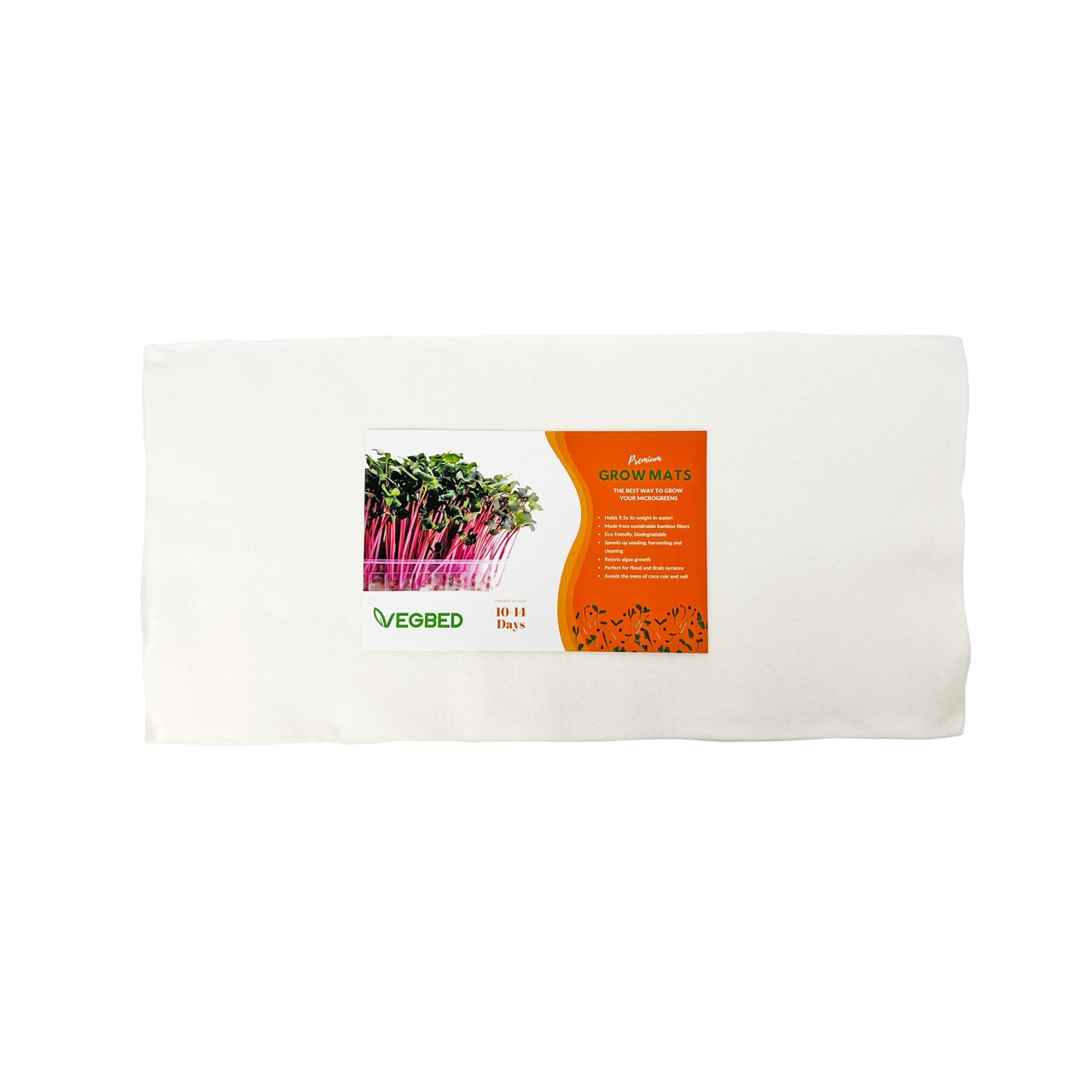Microgreens are a great addition to any farm, providing nutrient-rich greens that can be harvested in just a few days. However, one of the most crucial aspects of growing healthy microgreens is proper watering. In this blog, we’ll explore different watering methods, their pros and cons, and tips to ensure your microgreens thrive.
Understanding Microgreen Watering Needs
Microgreens have specific watering needs due to their delicate nature and dense planting. Proper watering ensures that your microgreens grow uniformly and are free from issues like mold or root rot. Here are some key factors to consider:
- Moisture Levels: Microgreens need consistently moist, but not waterlogged, growing mediums.
- Water Quality: Use clean, filtered water to avoid introducing contaminants.
- Watering Frequency: This can vary based on the growing medium, environment, and stage of growth.
Watering Methods for Microgreens
- Bottom Watering
Method: Place your microgreen trays in a larger tray filled with water. Allow the water to soak up through the drainage holes in the bottom of the tray.
Pros: - Reduces the risk of mold and fungal issues by keeping the foliage dry. - Ensures even moisture distribution. - Less disturbance to the delicate seedlings.
Cons: - Requires monitoring to avoid overwatering. - May need to be done more frequently in hot or dry conditions.
Tips: Fill the bottom tray with about 1 inch of water and let the microgreen trays sit for 10-15 minutes. Check the moisture level of the growing medium and remove the trays once adequately hydrated.
- Top Watering
Method: Use a fine mist spray bottle or a watering can with a gentle nozzle to water the microgreens from above.
Pros: - Easy to implement and control. - Allows for targeted watering of specific areas.
Cons: - Risk of overwatering and potential mold growth. - Can cause soil compaction and disturb delicate seedlings.
Tips: Use a fine mist to avoid damaging the seedlings. Water in the early morning to allow the foliage to dry throughout the day, reducing the risk of mold.
- Automated Irrigation Systems
Method: Employ drip irrigation or misting systems to automate the watering process.
Pros: - Consistent and controlled watering. - Saves time and labor, especially for larger operations. - Reduces the risk of over or underwatering.
Cons: - Higher initial setup cost. - Requires maintenance and monitoring to ensure proper function.
Tips: Set the system to water at intervals that keep the growing medium consistently moist. Regularly check the system for clogs or leaks.
Why Vegbed Champions Watering Concerns
At Vegbed, we understand that proper watering is a cornerstone of successful microgreens cultivation. Here’s how Vegbed addresses watering concerns:
- Optimized Growing Medium: Our growing mediums are designed to retain the right amount of moisture while allowing excess water to drain away, preventing waterlogging and promoting healthy root development.
- Sustainable Practices: Our products are designed with sustainability in mind, ensuring that your watering practices are eco-friendly and efficient.
- Clean Growing Environment: Our bamboo fiber grow mats keep the growing environment clean, reducing the amount of water needed to clean trays and making the entire process more efficient and sustainable.
Choosing the Best Method
The best watering method for your microgreens depends on your growing setup, scale, and personal preferences. Here are some considerations to help you decide:
- Small-Scale or Home Growers: Bottom watering is often the best choice for home growers due to its simplicity and effectiveness in preventing mold.
- Commercial or Large-Scale Growers: Automated irrigation systems can save time and ensure consistent results, making them ideal for larger operations.
- Mixed Approach: Some growers use a combination of methods, such as bottom watering for initial hydration and top watering for targeted areas as needed.
Additional Tips for Watering Microgreens
- Monitor Moisture Levels: Use a moisture meter or simply check the growing medium with your fingers to ensure it remains consistently moist.
- Avoid Overwatering: Signs of overwatering include yellowing leaves, mold growth, and a soggy growing medium.
- Ensure Good Drainage: Make sure your trays have adequate drainage holes to prevent waterlogging.
Conclusion
Proper watering is essential for growing healthy, vibrant microgreens. Whether you choose bottom watering, top watering, or an automated system, understanding the needs of your microgreens and monitoring moisture levels will help you achieve the best results.
With Vegbed's commitment to optimizing your growing experience and keeping your trays clean with bamboo fiber grow mats, you can be confident in your watering practices.
Happy growing! 🌱



